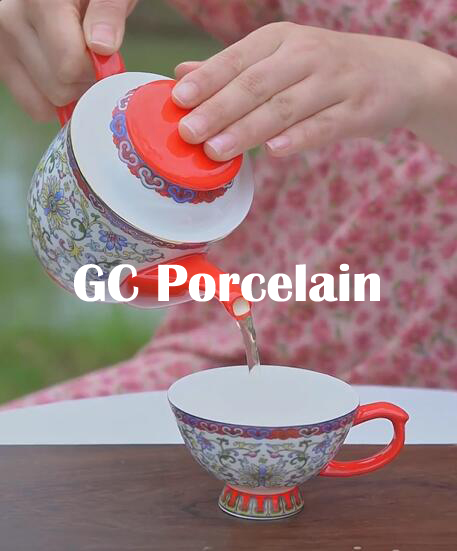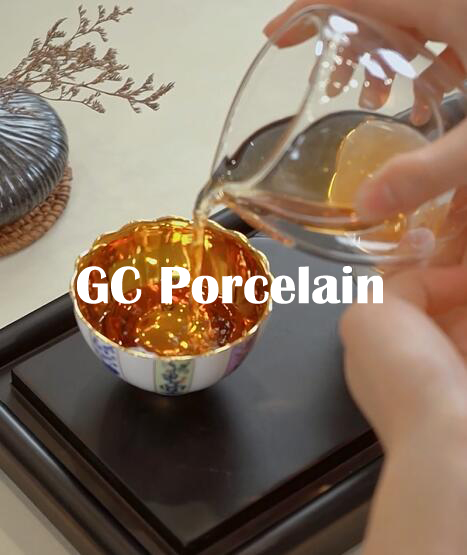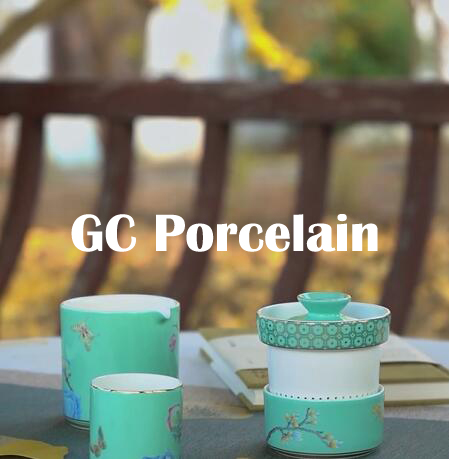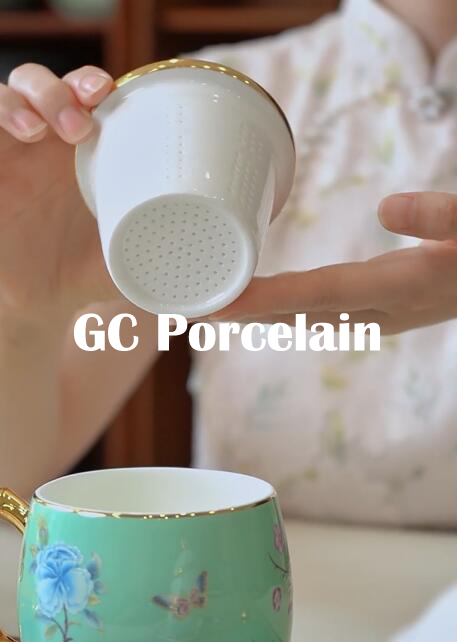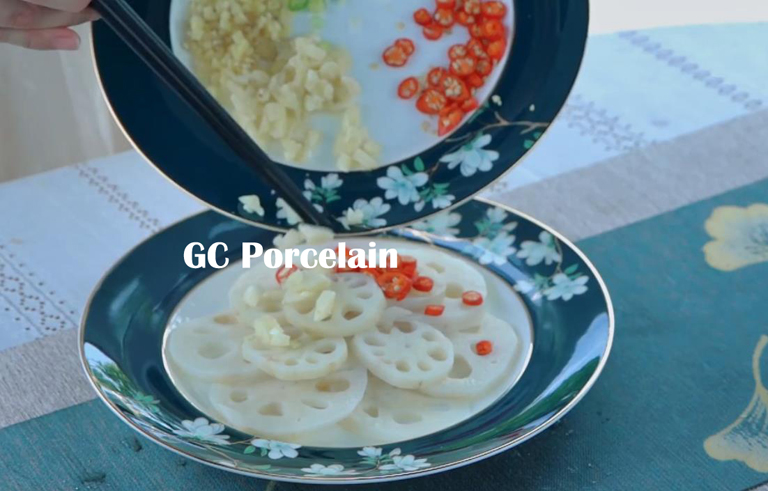QUOTE
In terms of material, ceramics is composed of several parts of the body, glaze and decorative materials. Chinese ceramics has undergone a long development process, ceramic material changes and development, is one of the internal factors of change and development of Chinese ceramics. Material is different, is the difference between pottery and porcelain one. In the history of the development of Chinese ceramics, pottery to porcelain transition from the Shang and Zhou to the East Han long calendar period, and the invention of porcelain is the Yue kiln in Zhejiang Province in the late East Han Dynasty to complete. To accurately recognize the material specificity of Chinese Gaochun Porcelain, it is necessary to understand the classification of ceramics.
Classification of Ceramic Mugs
According to the people of this understanding of the process of development, in the 1970s all walks of life in China on the ancient ceramics scholars interested in the classification of ceramics in China carried out a wide range of academic discussions. 1978 in Jinhua, Zhejiang Province, convened the "Chinese ceramics history of the meeting" will be the culmination of this discussion, and the formation of a lot of consensus. For example, the concept of "primitive porcelain", that is, refers to the primitive stage of porcelain products, for the use of iron content is not high (about 2% or so) of clay molding, glazed and fired at a high temperature of about 1200C glaze products. On this basis, the archaeological community put forward the distinction between pottery and porcelain.
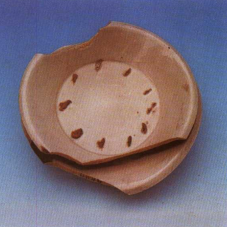
Five Dynasties White Porcelain Bowl
In the 80s of the 20th century, the state unified the views of various aspects of the pre-built ceramics classification standards (GB5001-85), this standard is based on the intrinsic quality of the body as the main basis for classification. Which flame porcelain is based on the concept of porcelain development history and international practice. Since then, pottery and porcelain classification standards are unified in one.
From the existing archaeological data, according to modern ceramic standards, the Chinese Gaochun Porcelain material in the Five Dynasties after entering the general fine porcelain as the main direction of production, and focus on the main through the porcelain, and part of the fine porcelain; Song Dynasty porcelain appearance of luster and elegance on the changes, integrated after the main fine porcelain; Yuan Dynasty after insisting on the glaze color of the kiln had appeared in the whole country, the decorative techniques and other crafts, creative transplantation should be used for fine porcelain, blue and white porcelain, blue and white glazed red porcelain, blue and white Linglong porcelain, high temperature color glaze porcelain, pastel porcelain, and the production of blue and white porcelain, the production of high temperature color glaze porcelain, the production of high temperature color glaze porcelain, pastel porcelain, the production of high temperature color glaze porcelain. Creative transplantation should be used on fine porcelain, produced blue and white porcelain, blue and white glazed red porcelain, blue and white Linglong porcelain, high-temperature color glaze porcelain, pastel porcelain, new color porcelain, sculpture and other types of porcelain.
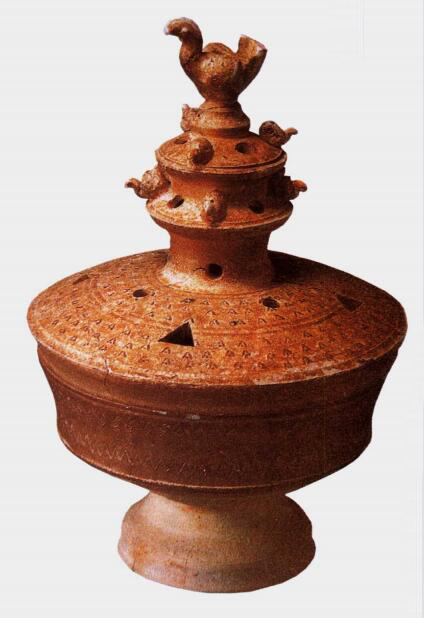
primitive celadon
| form | raw materials | firing temperature | glaze (of porcelain) |
| crockery | Common clay, iron content generally above 3%. | Below 1000°C | Unglazed or low temperature glaze |
| chinaware | Porcelain stone (clay) or porcelain stone with kaolin, generally with less than 3% iron content | Below 1200°C | High temperature glaze above 1200℃ |
| Performance and Characteristics | crockery | chinaware |
| Water absorption (%) | Generally greater than 3% | Generally no more than 3% |
| transparency (of light) | windowless | translucent |
| Placenta characteristics | Unglassed or poorly glassed, not dense, rough in section | High degree of glassiness, dense and fine structure, stone or shell-like in section |
| percussion | turbid | melodious |
| name (of a thing) | coarse pottery | Ordinary pottery | pottery |
| hallmark | Water absorption is generally greater than 15%, not glazed, rough production. | Water absorption is generally not more than 12%, coarser cross-section particles, larger pores, surface glaze, production is not fine. | Water absorption rate of general not more than 15 %, cross-section of fine particles, small pores, uniform structure, glazed or unglazed, fine production. |
| name (of a thing) | Stoneware | General Porcelain | fine porcelain |
| hallmark | Water absorption is generally not more than 3%, poor light transmission, usually thicker carcass, color, cross-section of the stone, the production of more delicate. | Water absorption is generally not more than 1%, there is a certain degree of light transmittance, cross-section of the stone or shell-shaped, the production of more delicate. | Water absorption is generally not more than 0.5%, good light transmission, delicate section, shell-shaped, fine production. |
Classification of ceramic glazes
Ceramics used for different purposes, the production process is different, the type and composition of glaze is also different. Types of glaze can be based on the type of product, the composition of the melt and raw materials, manufacturing methods, firing temperature and appearance characteristics of different angles for classification. The same kind of glaze according to different perspectives, there can be several names, such as feldspar as the frit glaze can be called feldspar glaze, also belongs to the high-temperature glaze, raw glaze, alkaline glaze, transparent glaze and so on. The common methods of classification of glazes are shown in the table below.
| Classification basis | Name of the type of glaze | |
| Type of grudge | Pottery glaze, flameware glaze, porcelain glaze | |
| Manufacturing process | Glaze preparation method | Raw material glaze, frit glaze, volatile glaze (salt glaze) |
| firing temperature | Low temperature sleeve (≤1120℃, medium temperature glaze (1120℃ ~ 1200℃), high temperature glaze (≥1300℃), fusible glaze, refractory glaze | |
| make up | Main fluxes | Feldspar glaze, lime glaze, magnesium-uranium, zinc glaze, leaded glaze, lead-free glaze, etc. |
| Primary colorants | Copper red glaze, iron red glaze, iron blue glaze. Cadmium selenium red glaze, onyx red glaze, chrome green glaze, etc. | |
| characteristic | Appearance | Transparent glaze, milky glaze, non-glossy glaze, monochrome glaze, multi-color glaze, crackle glaze, iridescent glaze, oil drop glaze, flower glaze, etc. |
| physical property | Low-expansion glaze, semiconductor glaze, anti-bacterial sleeve, wear-resistant glaze, etc. | |
| microstructure | Vitreous glaze. Folding glaze, crystalline glaze, split-phase glaze. | |
| use | Decorative glazes, bonding glazes, base glazes, surface glazes, printing glazes, trademark glazes, etc. | |
Classification of Ceramic Decoration
Ceramic decoration refers to the process of artistic processing on ceramic pieces; it makes ceramics both practical and artistic, and can expand the source of raw materials for billet making, and improve the grade and added value of products.
Ceramic decoration can be in the glaze before the bad body or the surface of the body for processing, can also be on the glaze or glaze and glaze on the surface of the combined processing. There are many methods of decoration, which can be roughly summarized in the table below. These methods are sometimes applied alone, sometimes combined, creating a rich and colorful ceramic products. However, the choice of decorative methods, must give full consideration to the use of products to be decorated function and use of the environment, so as to ensure the decorative effect.
| form | Decoration Name | Process Characteristics |
| a statue | Carving, round carving, relief pinch carving, skeletonizing, etc. | Use of carving, piling, kneading, skeletonization and other techniques to shape the body of the product. |
| bear grudge | colored clay | Fully or partially colored blank clay |
| cosmetic soil | Apply a thin layer of clay on the surface of the body to cover the color of the body and to facilitate the combination of glaze. | |
| glaze | Color glaze | Apply a single color glaze or a compound color glaze to the surface of the body. |
| Art Glaze | Through the process control to cause the glaze appear special effects, such as the introduction of crystallizing agent and control of cooling during firing can be derived from the crystalline glaze; increase the coefficient of expansion of the billet glaze can be obtained by the difference between the crushed glaze. | |
| colored decoration | glaze | The surface of the blank is painted with colored materials, then glazed with transparent glaze and fired at a high temperature (above 1300℃). Which color material under the glaze. Wear-resistant, corrosion-resistant, but not rich in color, such as celadon. |
| glaze | Commonly known as "kiln color", that is, in the white porcelain glaze has been fired after painting, in the 1060 ℃ ~ 1200 ℃ high temperature rapid baking into. In such a high temperature firing, the glaze re-melted, coloring material settled in the glaze. Also has the characteristics of wear and corrosion resistance, and the color tone is richer than underglaze color. | |
| glaze | In has been fired on the glaze of white porcelain color painting, in 600 ℃ ~ 900 ℃ temperature baked into. According to the color and baking temperature of different, can be further subdivided into ancient color, pastel color, new color, gold color and applique color. | |
| iridescent | The main body of the design is first painted with underglaze colors, and then the rest of the design is painted with overglaze colors after firing at high temperatures. | |
| Integrated Decoration | The use of two or more of these decorative techniques to decorate a product. |
If you have any questions or need to custom dinnerware service, please contact our Email:info@gcporcelain.com for the most thoughtful support!


